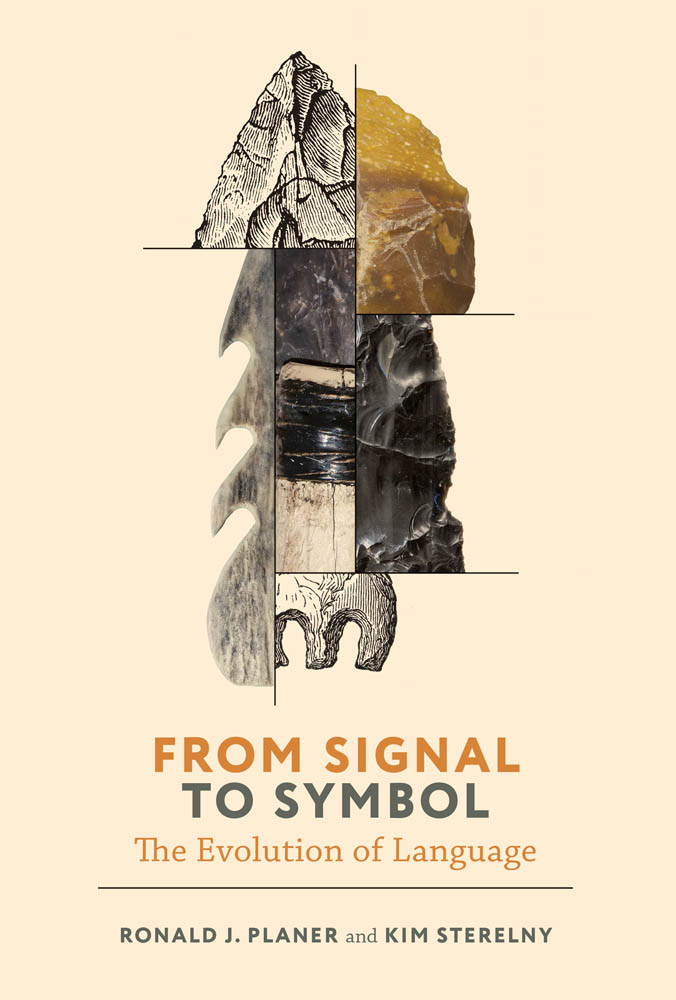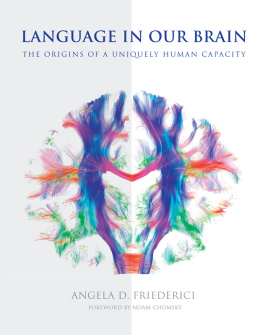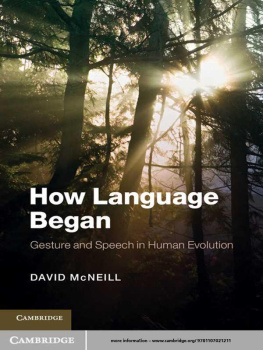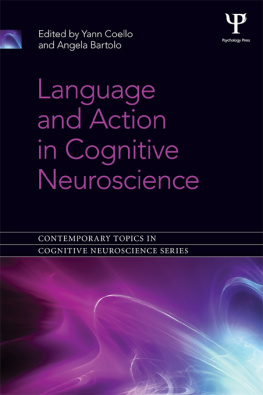Contents
Guide
Pagebreaks of the print version

Life and Mind: Philosophical Issues in Biology and Psychology
Kim Sterelny and Robert A. Wilson, Series Editors
From Signal to Symbol: The Evolution of Language, Ronald J. Planer and Kim Sterelny, 2021
Whats Left of Human Nature? A Post-Essentialist, Pluralist, and Interactive Account of a Contested Concept, Maria Kronfeldner, 2018
Rock, Bone, and Ruin: An Optimists Guide to the Historical Sciences, Adrian Currie, 2018
A Mark of the Mental: In Defense of Informational Teleosemantics, Karen Neander, 2017
Mental Time Travel: Episodic Memory and Our Knowledge of the Personal Past, Kourken Michaelian, 2016
Becoming Human: The Ontogenesis, Metaphysics, and Expression of Human Emotionality, Jennifer Greenwood, 2015
The Measure of Madness: Philosophy of Mind and Cognitive Neuropsychiatry, Philip Gerrans, 2014
Beyond Versus: The Struggle to Understand the Interaction of Nature and Nurture, James Tabery, 2014
Investigating the Psychological World: Scientific Method in the Behavioral Sciences, Brian D. Haig, 2014
Evolution in Four Dimensions: Genetic, Epigenetic, Behavioral, and Symbolic Variation in the History of Life, revised edition, Eva Jablonka and Marion J. Lamb, 2014
Cooperation and Its Evolution, Kim Sterelny, Richard Joyce, Brett Calcott, and Ben Fraser, editors, 2013
Ingenious Genes: How Gene Regulation Networks Evolve to Control Development, Roger Sansom, 2011
Yuck! The Nature and Moral Significance of Disgust, Daniel Kelly, 2011
Laws, Mind, and Free Will, Steven Horst, 2011
Perplexities of Consciousness, Eric Schwitzgebel, 2011
Humanitys End: Why We Should Reject Radical Enhancement, Nicholas Agar, 2010
Color Ontology and Color Science, Jonathan Cohen and Mohan Matthen, editors, 2010
The Extended Mind, Richard Menary, editor, 2010
The Native Mind and the Cultural Construction of Nature, Scott Atran and Douglas Medin, 2008
Describing Inner Experience? Proponent Meets Skeptic, Russell T. Hurlburt and Eric Schwitzgebel, 2007
Evolutionary Psychology as Maladapted Psychology, Robert C. Richardson, 2007
The Evolution of Morality, Richard Joyce, 2006
Evolution in Four Dimensions: Genetic, Epigenetic, Behavioral, and Symbolic Variation in the History of Life, Eva Jablonka and Marion J. Lamb, 2005
Molecular Models of Life: Philosophical Papers on Molecular Biology, Sahotra Sarkar, 2005
The Mind Incarnate, Lawrence A. Shapiro, 2004
Organisms and Artifacts: Design in Nature and Elsewhere, Tim Lewens, 2004
Seeing and Visualizing: Its Not What You Think, Zenon W. Pylyshyn, 2003
Evolution and Learning: The Baldwin Effect Reconsidered, Bruce H. Weber and David J. Depew, editors, 2003
The New Phrenology: The Limits of Localizing Cognitive Processes in the Brain, William R. Uttal, 2001
Cycles of Contingency: Developmental Systems and Evolution, Susan Oyama, Paul E. Griffiths, and Russell D. Gray, editors, 2001
Coherence in Thought and Action, Paul Thagard, 2000
From Signal to Symbol
The Evolution of Language
Ronald J. Planer and Kim Sterelny
The MIT Press
Cambridge, Massachusetts
London, England
2021 The Massachusetts Institute of Technology
All rights reserved. No part of this book may be reproduced in any form by any electronic or mechanical means (including photocopying, recording, or information storage and retrieval) without permission in writing from the publisher.
The MIT Press would like to thank the anonymous peer reviewers who provided comments on drafts of this book. The generous work of academic experts is essential for establishing the authority and quality of our publications. We acknowledge with gratitude the contributions of these otherwise uncredited readers.
Library of Congress Cataloging-in-Publication Data
Names: Planer, Ronald J., author. | Sterelny, Kim, author.
Title: From signal to symbol : the evolution of language / Ronald J. Planer and Kim Sterelny.
Description: Cambridge : The MIT Press, 2021. | Series: Life and mind: philosophical issues in biology and psychology | Includes bibliographical references and index.
Identifiers: LCCN 2020041673 | ISBN 9780262045971 (hardcover)
Subjects: LCSH: Language and languages--Origin. | Language acquisition. | Human evolution.
Classification: LCC P116 .P585 2021 | DDC 401--dc23
LC record available at https://lccn.loc.gov/2020041673 ISBN: 978-0-262-04597-1
d_r0
For Eric, my son
R.P.
For my daughter Kate with love, and with appreciation of her tolerance of her fathers eccentricities
K.S.
Contents
List of Figures
A map of Europe drawn in 1602 (Europae by Arnoldo di Arnoldi, Ars Electronica: CC BY-NC-ND 2.0), and a map of the same region drawn in 1923 (Europe after WW1 by Jon Ingram, Gresham Encyclopedia, CC BY 2.0).
The sender-receiver setup. The sender can see the state of the world but cannot act in that state except to send a signal. The receiver cannot see the state of the world but can perform one or another act depending on the signal it receives. The act that is performed in a given state yields a payoff for both sender and receiver. These payoffs shape sender and receiver strategies over time. (Figure reproduced from Godfrey-Smith 2017 with permission of author.)
An illustration of how activation spreads through the array of goal representations along control lines. Here we artificially take the goals in the bottom row to be basic ones (and omit some obvious goals for simplicitys sake); in reality, many of these goals would control still further goals.
A late Acheulian handaxe. The Portable Antiquities Scheme, photo by Andrew Richardson, 2004 (CC BY-SA 4.0).
Sykess diagram illustrating a possible chane opratoire for composite tool manufacture using birch bark pitch. The diagram simultaneously represents three courses of action: (i) the de novo creation of a hafted stone tool; (ii) the retooling of an existing hafted tool with a new flake; and (iii) disposal of the tool. The Hafted tool node controls three subgoals at the next level down, Adhesive, Stone edge, and Wood haft. And each of these, in turn, controls additional subgoals. Likewise, the Re-use of tool node controls two subgoals, New stone flake and Fire, which in turn control other less abstract goals. Material within a dotted box corresponds to possible goals (e.g., the toolmaker may not have to source stone if some is ready at hand). (The reader will notice that this diagram makes use of some different conventions for representing the structure of an action plan than we have used in this book; but it is easy enough to see how the information in the diagram might be reorganized to fit our format.) Figure reproduced from Sykes (2015) with permission of the author.
List of Tables
Some examples of an enriched imperative sign system
List of Boxs
Preface
This book has had a long gestation. One of us (Sterelny) has been working for the best part of fifteen years primarily on the evolution of human social life and on the capacities that make that life possible. As that work progressed, he became increasingly oppressed by the realization that a fully serious treatment of language was inescapable. He devoted a chapter of









